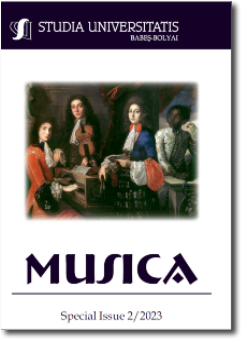TAPPING INTO UNKNOWN MUSICAL AREAS ANALYSIS OF A MEDIEVAL BOHEMIAN MUSICAL MANUSCRIPT
TAPPING INTO UNKNOWN MUSICAL AREAS ANALYSIS OF A MEDIEVAL BOHEMIAN MUSICAL MANUSCRIPT
Author(s): Szabolcs MártonSubject(s): Cultural history, Music, 15th Century, 16th Century
Published by: Studia Universitatis Babes-Bolyai
Keywords: Graduale Latino-Bohemicum; musical manuscript; codex; medieval; paleography; Gradual; Cancional; Antifonal; Hussite; Czech; Latin; Gregorian; unison; polyphony;
Summary/Abstract: This research presents a medieval musical manuscript that has not yet been analyzed in detail. Catalogued under the name of Graduale Latino-Bohemicum, and currently held in the Batthyaneum Library of Alba Iulia, it has many peculiarities in comparison with other similar codices from the Transylvanian area, hence also compared with other Czech manuscripts. We offer analysis around the date of its creation, then debate different naming options. To create the proper context of understanding for the analysis, we present a brief historical background of the time and place in question, that is the turbulent 15th and 16th century of Europe, with special focus on Transylvania. We continue with the physical aspects of the manuscript that guide us through the colorful world of medieval codices. From a structural standpoint the work has two delimited parts. The bilingual manuscript starts with chants written in Czech and finishes with melodies in Latin. The existence of the Czech language, as well as many other clues govern us to set up hypotheses regarding its provenance. During the content analysis we dedicate a subchapter to the later page inserts that contain additional notes for the chants, wherefrom we can further conclude theories about the usage of the codex, authors of the later annotations, and so forth. We offer a more in-depth analysis of the musical notation where aspects like rhythm, staff, neumes used and special solutions are shown. Finally, we conclude all major, raised questions related to the name, origin, and genre.
Journal: Studia Universitatis Babes-Bolyai - Musica
- Issue Year: 68/2023
- Issue No: Sp.Issue 2
- Page Range: 233-253
- Page Count: 21
- Language: English

